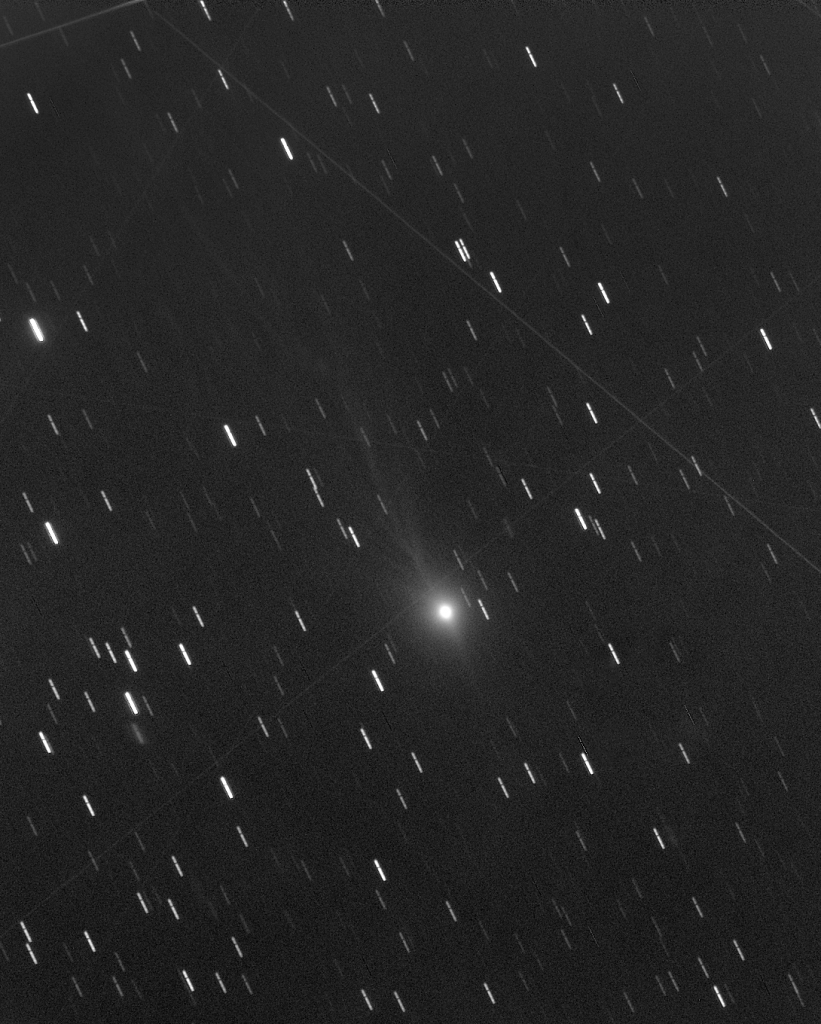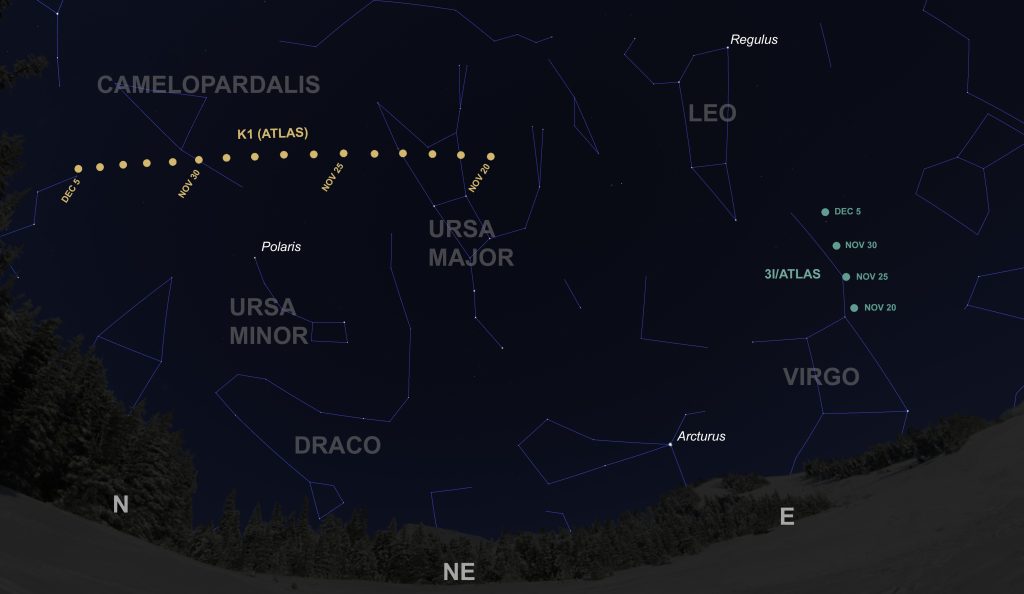
It finally happened! Comet 3I/ATLAS, which has made numerous headlines for being only the third interstellar comet to be discovered (and some alleging it might be alien technology), has emerged from behind the Sun to once again show itself to eager Earthlings, including those at Vanderbilt Dyer Observatory, wanting to point telescopes toward it and learn as much as we can about this strange visitor.
Comet 3I/ATLAS was determined to be an interstellar comet (originating from outside the solar system) because of its extreme trajectory – there is no way the Sun’s gravity alone could have resulted in its extreme velocity. As such, it is on a one-way trip through the solar system. 3I/ATLAS made its closest approach to Mars back in early October where orbiting spacecraft (and even probes on the Martian surface) were able to image it. Some of the most anticipated images were obtained by NASA’s orbiting HiRISE probe; however, the government shutdown delayed the release of the imagery until just recently. In the end, HiRISE was only able to show a blob despite only being a couple million miles from the target. Comet 3I/ATLAS will make its closest approach to Earth on December 19th. In this case, “close” is a relative term as we will still be about 170 million miles from it (nearly twice the distance between the Earth and the Sun). In March 2026, it will be near Jupiter where NASA’s Juno spacecraft will try to image it.
In the early morning hours of November 17, Dyer’s Dr. Billy Teets snapped a new series of images of the comet with the observatory’s remotely controlled 16″ telescope. With the comet still not far from the Sun in our sky, there was only about a half hour to image from the time it cleared the tree tops and other obstacles until the dawn sky began to compete with the faint traveler. As the comet continues to climb higher in the morning sky, more images will be acquired.
Comet 3I/ATLAS has remained very faint, and it does not show a dramatic tail like one might expect. This could be due to the extraordinarily long time it has been isolated in the harsh environment of interstellar space. High-energy particles known as cosmic rays may have helped to alter/harden its surface, making it more difficult for it to produce a more spectacular tail. Nevertheless, it does show a fainter, complex tail. In addition, it now sports and “anti-tail” that points toward the Sun. Most comet tails point away from the Sun due to the blowing solar wind and radiation pressure. Heavier particles are not affected as much and can trail the comet, forming the anti-tail.

This is not the only ATLAS comet visible. Higher in the morning sky one can spot Comet K1/ATLAS, which is of no relation to 3I/ATLAS other than it was discovered by the Asteroid Terrestrial-impact Last Alert System (ATLAS), a survey consisting of five telescopes scanning the sky. This comet is more eye-catching thanks to its prominent tail, and it also gained notoriety for showing a golden color instead of a bluish-green hue thanks to its depletion of carbon-chain molecules.
It is on a northward trek up near the Big Dipper as of this writing, and near the end of November it will be far enough north to become circumpolar (it will always be above the horizon over 24 hours) and be seen in the evening sky. This comet is currently breaking up thanks to its encounter with the Sun, so its fragments may not last very long. If the comet doesn’t disintegrate entirely, it is most likely also on a one-way trip through the solar system due to its velocity being a bit too high for the Sun to hold onto it. Check it out while you can!
